Elden Ring review
Much has been made of George R.R. Martin’s involvement in Elden Ring. Not for nothing, the veteran fantasy and sci-fi author was brought on board by Director Hidetaka Miyazaki to build an intricate, epic history for the Lands Between. The world presented here is certainly FromSoftware’s most fleshed-out and documented setting. That said, though, Elden Ring still has that Dark Soulsian habit of pushing its story to one side in favour of the spectacle. It gets away with it, mostly, but I couldn’t shake the feeling that this time, a little traditional storytelling would have been appreciated.
But look, I’m aware that arguing a FromSoftware game needs more story is like arguing a Snickers bar needs more peanuts. There’s already plenty in it, if you care to pay attention to what you’re consuming – they’re just easy to miss among all the other good stuff.
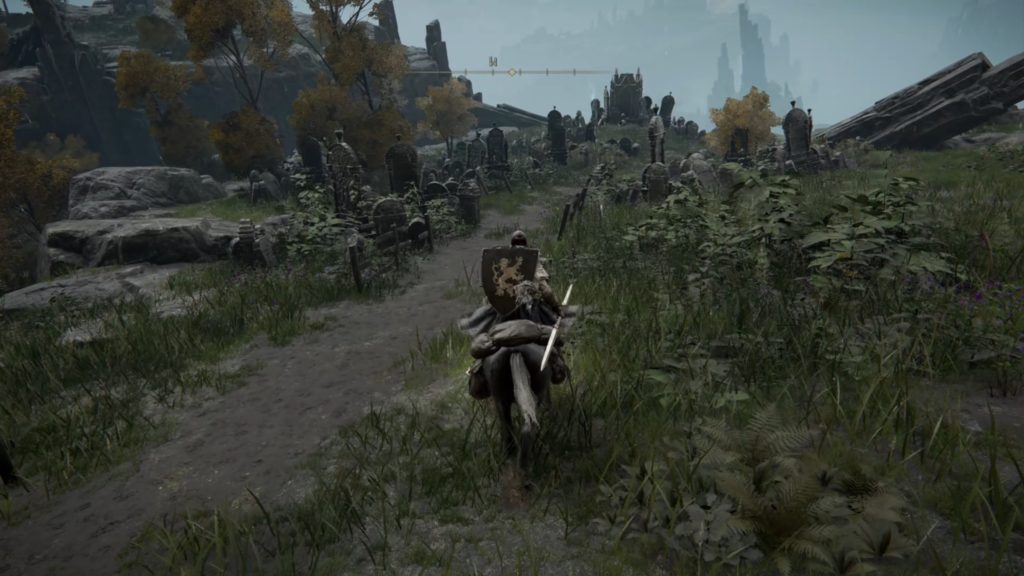
Elden Ring: A breathtaking adventure
The Lands Between setting is the culmination of what FromSoftware have been doing for the last 14 years. It has elements of both Lordran and Drangleic in its DNA, but it also has some of the unexpected beauty of Sekiro’s fantastical Japan, too. Thanks to the Closed Network Tests and numerous preview sessions, that first step out of the darkness into Limgrave may have been spoiled for many, but in Elden Ring that’s truly the tip of the iceberg. You may have seen everything everyone has already discovered in Limgrave, but as a great man once said, “You ain’t seen nothin’ yet.”
You are a Tarnished, a resurrected former lord who has returned to the Lands Between to gather the pieces of the titular Elden Ring. This cosmic, deified artefact is presented as a collection of thousands of Runes, eldritch symbols that contain the power of creation. The Lands Between were ruled by Demigods in ages past, but when the Rune of Death was stolen, they went to war, pulling Runes from the broken ring to bolster their own powers. The result was a madness known as the Taint, which persisted through the time of the Shattering to present day. The world is out of balance, the few demigods that remain are hideous monstrosities, and you are here to put it right.
Elden Ring’s overarching plot is that of a spectacular fantasy epic. The scale is greater than anything From have done before, and it shows in every element of this adventure. Because that’s what this is, by the way: an adventure. Where previous From games have been challenging journeys into the darkness, characterised by hopeless despair and a sense of attrition, Elden Ring feels like more than just another quest story.
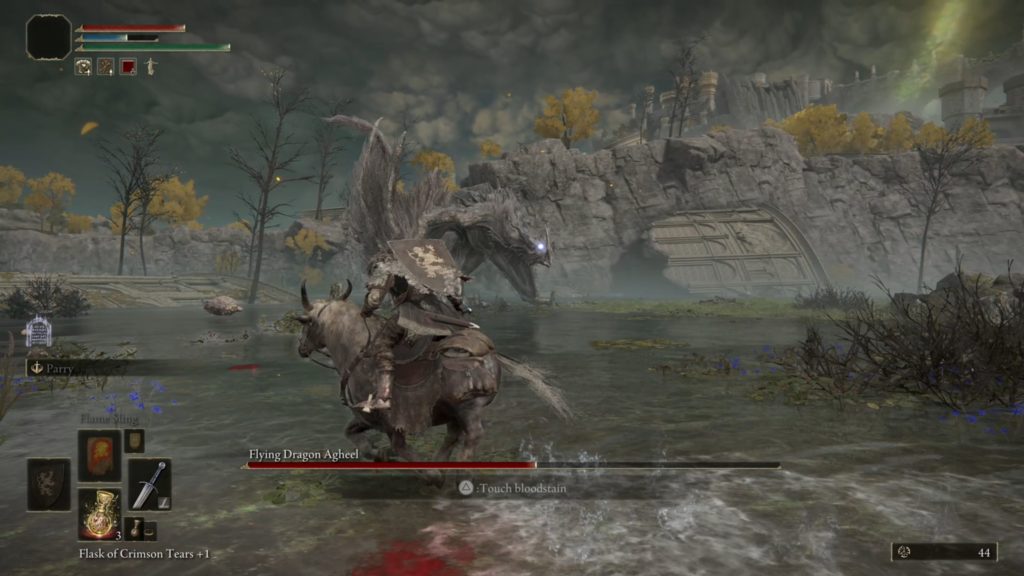
Choose your own adventure
Much of that feeling comes from the structure. From have always excelled at giving the player options in terms of where to go next. Their games open up organically, so intuitively constructed that you rarely need a map to find your way from one place to another. Elden Ring takes this and magnifies it. I was still marvelling at how much there was to do and find in Limgrave when I stumbled into a second area just as large. And it keeps going. On more than one occasion I wondered if it was just too big and too full for its own good.
But this grants an unprecedented level of freedom. As an open world, the Lands Between is analogous to only two others: Breath of the Wild’s Hyrule, and Skyrim. It’s not just that its non-linear, or as high as it is wide – it’s the sense of fullness. Without throwing shade, this is the antithesis of a Ubisoft open world. It’s not a checklist of things to do, or a map full of icons to go to and indulge in repetitive activities.
Everywhere you go is different to everywhere else. It may not have the sheer number of dungeons and towns that Skyrim has, or perhaps the inviting breadth and easy charm of Hyrule, but Elden Ring’s world combines enough elements of the two that it comfortably takes its place among them. To call it game-changing sounds like hyperbole, but it’s the truth. The runtime isn’t padded out with endless environmental puzzles or fetch quests – the world simply begs you to explore its every distant corner.
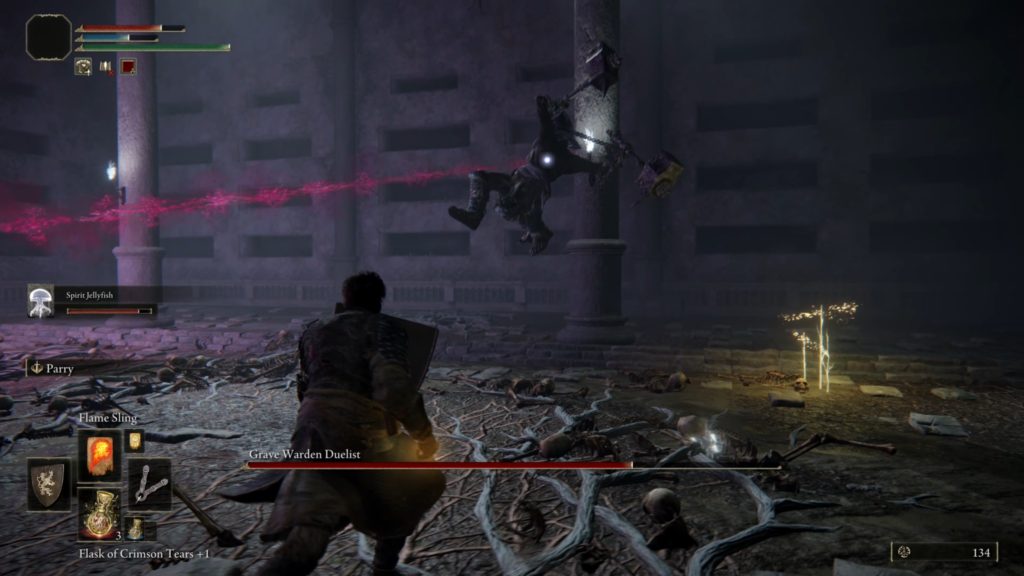
And the horse you rode in on
Once you have access to your spectral steed, Torrent, the world opens up to you. Wildlife darts between the trees, the weather changes dynamically, and a day-night cycle allows you to feel the passing of time naturally. Bonfires and lanterns are replaced by Sites of Grace, where you can level up and alter elements of your character. Crucially, you can also fast travel instantly to any of them provided you’re outdoors and out of combat. I say “replaced” because they’re functionally identical to points of sanctuary in other From games. Anyone going into Elden Ring from previous entries in this loosely-linked series will recognise multiple elements.
The weapon and character upgrades work the same way they always have, with a few tweaks. Early on you’ll be invited to the Roundtable Hold, a sort-of hub where NPCs you meet and aid will gather to offer services and sage advice. It feels like Bloodborne’s cathedral or Medula in Dark Souls 2. It creates a sense of progression and accomplishment that also feels comfortingly familiar.
As expected, the Lands Between are fraught with danger. Much of Limgrave is designed to be more accessible and even welcoming in places. Newcomers will delve its multiple dungeons for items and gear, facing off against bosses that almost gently prepare them for what’s to come. It should be said that most of the other areas have significantly fewer dungeons than Limgrave, with most of the action taking place in the Overworld. There are still plenty of places to explore, but Limgrave is very much a flex on FromSoftware’s part.
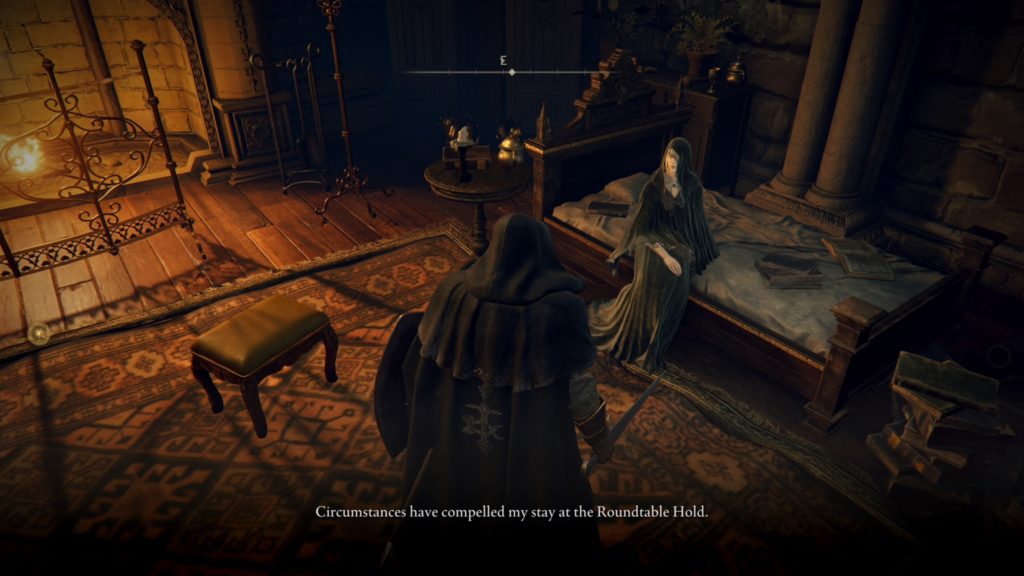
It’s dangerous to go alone
To fill your world map you’ll need to locate fragments from special pillars in each area. As the landscape takes shape, you’ll begin to get a sense of the sheer scale. And every little landmark is worth exploring, too. What looks like a ruin on the map might be a Fort, a tiny cave mouth may well lead to a sprawling dungeon. Buildings, bridges, ravines and valleys, little patches of trees, and scattered lakes all hold secrets worth uncovering. But of course, adventuring is a dangerous business.
Combat in Elden Ring doesn’t deviate greatly from previous From titles. Parries and counters, backstabs and dodge rolls, the ability to wield any weapon two-handed – all these elements are present. Stamina management is key for all classes, but those who build towards magical offence will need to manage their Focus, too. In addition to this there are weapon arts represented by the Ashes of War, which apply specific powerful abilities to your weapons. Talismans replace rings to bestow buffs and bonuses. Death will take away your Runes and return you to the nearest Site of Grace or Statue of Marika you found, and if you die again you’ll lose what you’ve accrued.
Multiplayer is a mix between cooperative questing and PvP duelling. There are no great changes to the formula here. Once again you can opt to place a summon sign to make yourself available to help others, or request a hand from other players to aid your own endeavours. Being online at all brings its own dangers, however, as you leave yourself open to invasion by other players that can cost you dearly. By and large the Dark Souls community understand the rules, and trolls are a minority. It’s just something to be aware of.
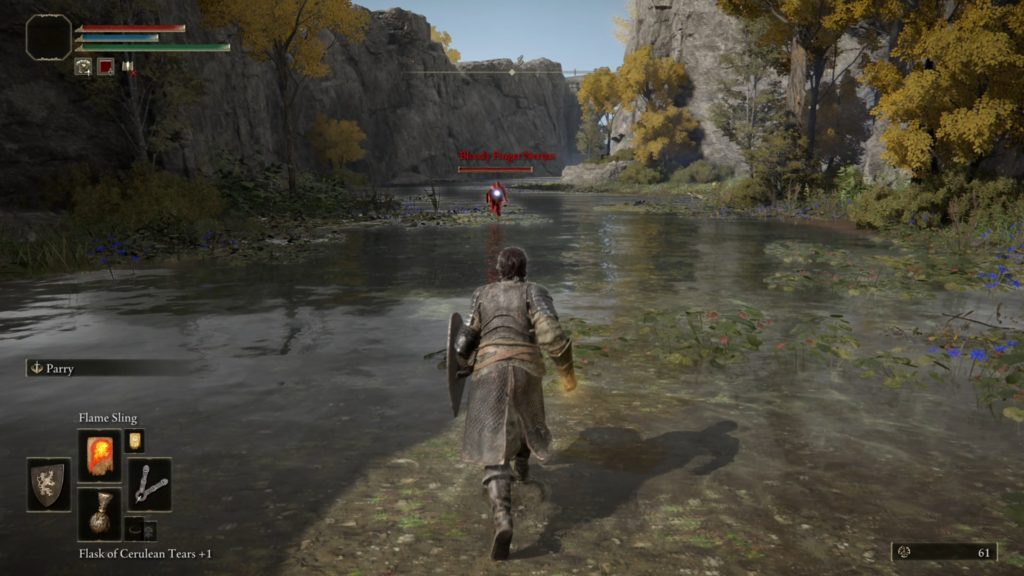
Elden Ring: An immense, deadly open world
In any event, combat is sublime, punishing recklessness but rewarding courage and patience. The larger bosses, the Demigods and their pretenders, offer a stiff challenge that will almost certainly feel like hitting brick walls to many. The difference is that here, you have the freedom to leave those bosses and explore elsewhere, to level up and tackle entire new areas. There is a critical path, but you can put it first or last on your to-do list.
Elden Ring takes other cues from Link’s adventure, too. Cookbooks can be found or bought that teach crafting recipes, and reagents and ingredients are everywhere. Flowers and resin, rocks and gemstones, animal parts cleaved from the endemic wildlife. You can craft multiple items from ammunition to bombs, potions to salves, but you’ll always need to rely on your Flask to restore Health and Focus Points. Certain items increase their efficacy, but you’ll need to search high and low to find them.
Ultimately your starting class will only determine the early game and you’ll be free to build however you like. The freedom is immense, as Elden Ring offers multiple ways to farm Runes, the currency with which you’ll level up and buy items. If you want to be a shirtless barbarian with a human-sized cudgel on one shoulder and a fireball in the other hand, you can. It’s just a matter of allocating points where you need them with each level.
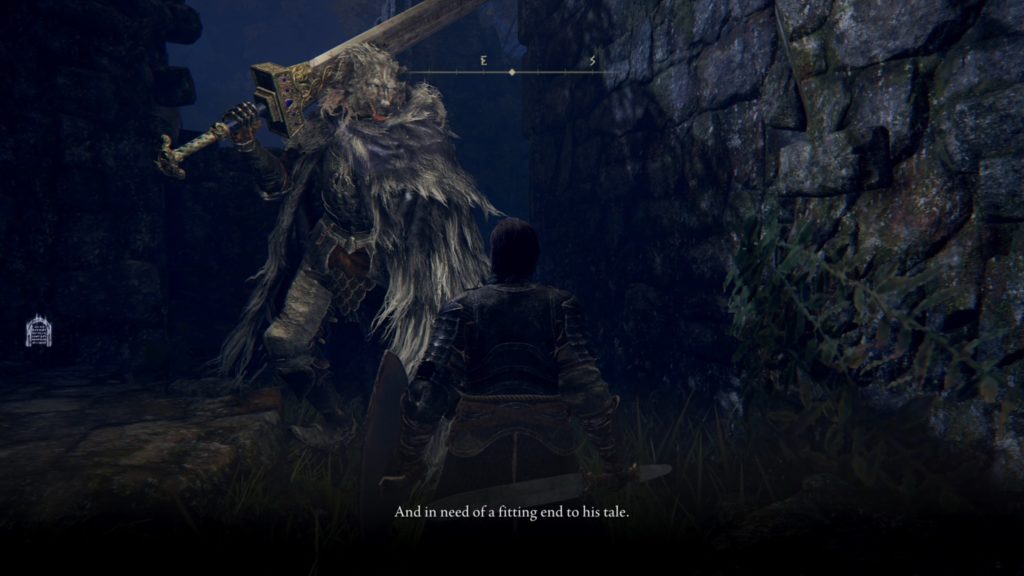
Knightmare creatures
As each new area stretches before you, the sense of grandeur and discovery increases. From sun-pierced forests and ancient bowers to grotesque landscapes like you’re traversing the insides of some cosmic colossus, the Lands Between are wonderfully diverse and rich with atmosphere, mystery and danger. Trapped chests can teleport you to far-flung reaches of the uncharted map, where enemies vastly out-level you and simply getting back becomes a challenge. NPCs issue side quests that weave their own mini stories, often rewarding you with unique items and services for your trouble.
On the odd occasion, this freedom can work against Elden Ring. So much has been made of the world building, and so enticing is the setting, that now and then I longed for From to just tell me some story. Give me some cutscenes, a little exposition, or maybe some direction. Because now and then it’s nothing short of intimidating. At a certain point, after defeating the first of what Elden Ring terms “Legacy bosses” I was presented with a new facet to my quest: find a specific tower to reactivate the Great Rune I had acquired. At the time I was roughly 15 hours in and suddenly I was facing four full areas to explore however I chose. The sense of awe and scale was staggering, but it led to a short period of me tentatively stabbing into the darkness before settling on a route. It’s intentional, of course, but those who crave direction or guidance might find it overwhelming.
Elden Ring: From’s Magnum Opus
Elden Ring is a landmark title. Just as FromSoftware have previously pushed the boundaries of acceptable challenge, organic storytelling, and grandiose world-building, here they present a level of freedom and exploration rarely seen. This is not a case of just going to the place and doing the thing over and over until the map turns from red to blue. It’s about picking a direction and riding in it, encountering enemies you can’t imagine beating and then beating them; being puzzled by a mystery that won’t make sense until hours later; it’s finding gear you can’t wait to be strong enough to use, or meeting enigmatic characters who may prove ally or enemy depending on trajectories you can’t yet predict.
That Elden Ring borrows assets and elements from its spiritual predecessors becomes an almost petty complaint. The way it weaves the familiar into the unknown creates a unique sense of adventure for series veterans, while the more accessible opening area allows newcomers to find their feet before jumping in headlong. In many ways, Elden Ring is a true magnum opus. It is the masters of a genre they created showing the pretenders and tributaries how it should be done, while teaching other open world developers a thing or two at the same time. And yet it’s not too proud or lofty to take cues from the very best of the rest. Quite simply, Elden Ring is FromSoftware’s biggest and boldest title to date, and one of the most thrilling open worlds ever built.




